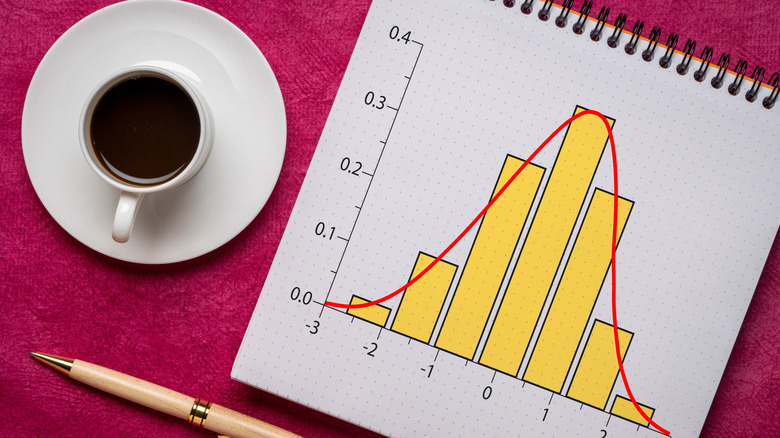How To Calculate Percent Deviation
Percent deviation measures the degree to which individual data points in a statistic deviate from the average measurement of that statistic. To calculate percent deviation, first determine the mean of the data and the average deviation of data points from that mean.
Calculate the mean
Calculate the average, or mean, of your data points. To do this, add the values of all data points, then divide by the number of data points. Say you have four melons, with weights of 2 pounds, 5 pounds, 6 pounds, and 7 pounds. Find the sum: 2 + 5 + 6 + 7 = 20. Then divide by four, since there are four data points: 20/4 = 5. So your potatoes have a mean weight of 5 pounds.
Calculate average deviation
Once you know the mean of your data, calculate the average deviation. Average deviation measures the average distance of your data points from the mean.
First, calculate the distance of each data point from the mean: the distance, D, of a data point equal to the absolute value of the data point's value, d, minus the mean, m: D = |d – m|. Absolute value, represented by | |, signifies that if the result of the subtraction is a negative number, convert it into a positive number. For example, the 2-pound melon has a deviation of three, since two minus the mean, five, is negative three, and the absolute value of negative three is three. Using this formula, you can find that the deviation of the 6-pound melon is one, and the 7-pound melon is two. The 5-pound melon's deviation is zero, since its weight is equal to the mean.
Once you know the deviations of all your data points, find their average by adding them, and dividing by the number of data points. The deviations are three, two, one, and zero, which have a sum of six. If you divide six by the number of data points, four, you get an average deviation of 1.5.
Percent deviation from mean and average
The mean and average deviation are used to find the percent deviation. Divide the average deviation by the mean, then multiply by 100. The number you get will show the average percentage that a data point differs from the mean. Your melons have a mean weight of 5 pounds, and an average deviation of 1.5 pounds, so: percent deviation = 1.5/5 x 100 = 30%.
So on average, your data points are distant from your mean by 30% of the mean's value.
Percent deviation from a known standard
Percent deviation can also refer to how much the mean of a set of data differs from a known or theoretical value. This can be useful, for instance, when comparing data gathered from a lab experiment to a known weight or density of a substance. To find this type of percent deviation, subtract the known value from the mean, divide the result by the known value, and multiply by 100.
Suppose you did an experiment to determine the density of aluminum, and came up with a mean density of 2,500 kilograms per meter squared. The known density of aluminum is 2,700 kilogram per meter squared, so you can use these two numbers to calculate by how much your experimental mean differs from the known mean. Subtract 2,700 from 2,500, divide the result by 2,700, then multiply by 100: percent deviation = (2,500 – 2,700)/2,700 x 100 = -200/2,700 x 100 = -7.41%.
The negative sign in your answer signifies that your mean is lower than the expected mean. If the percent deviation is positive, it signifies your mean is higher than expected. So your mean density is 7.41% lower than the known density.
